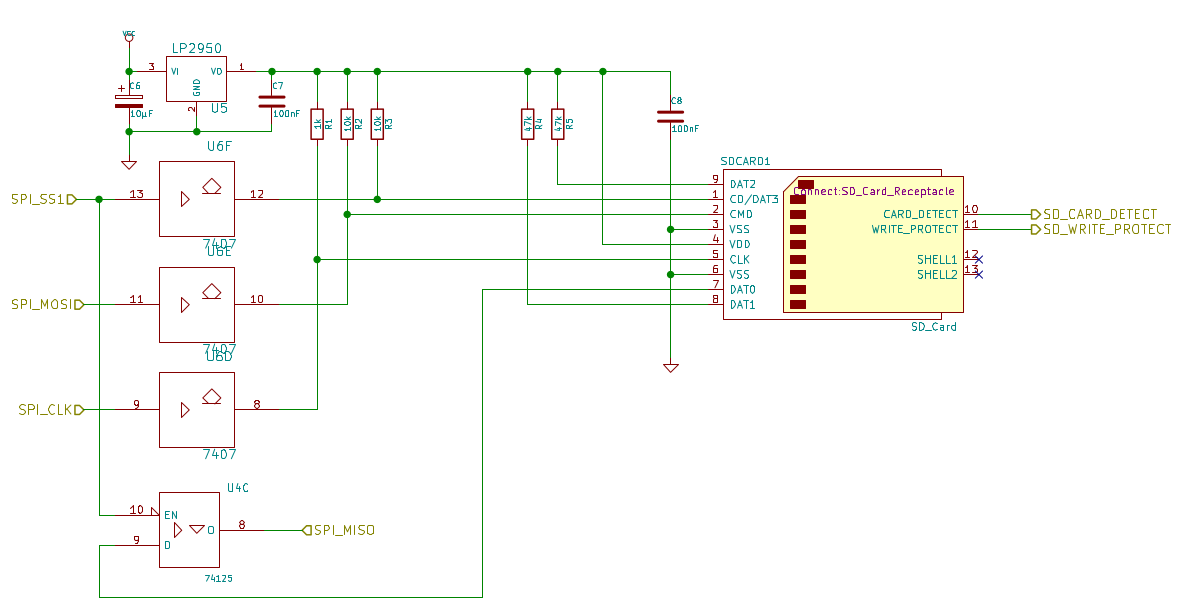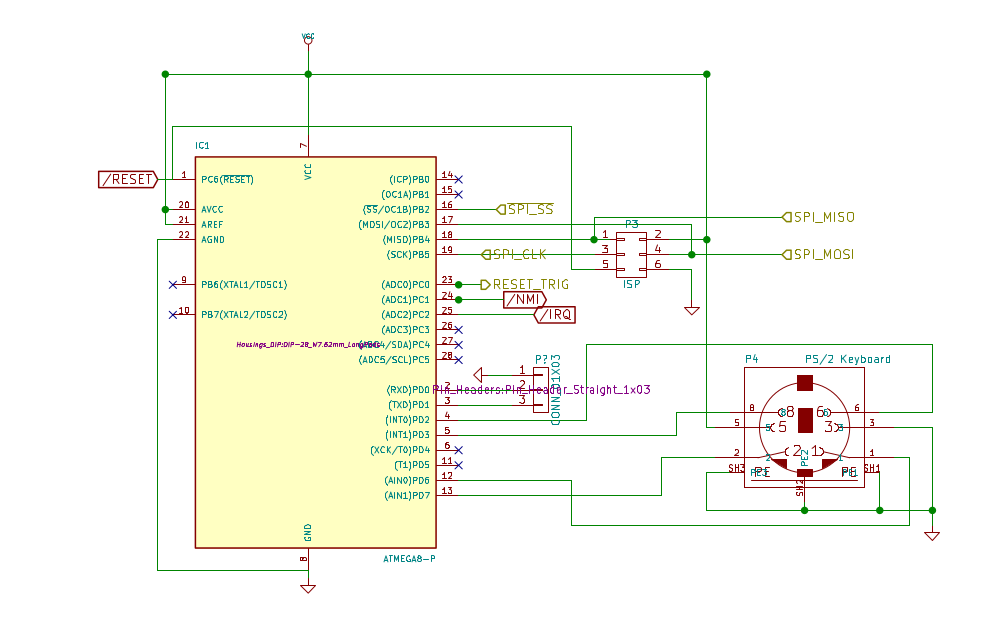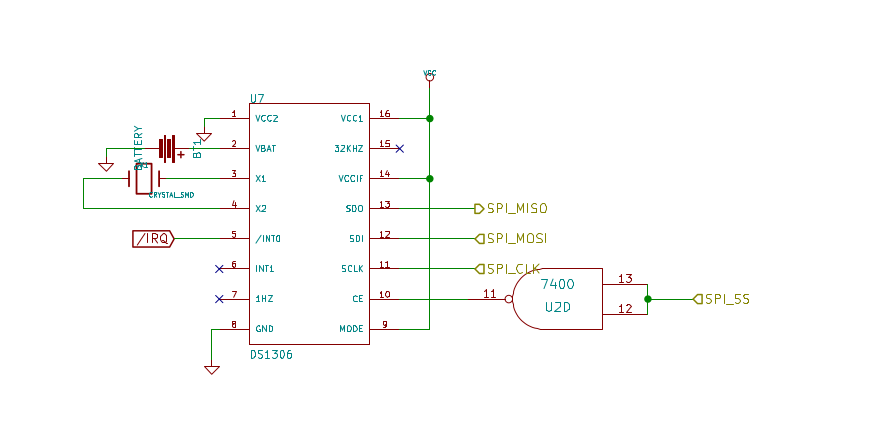SPI-Devices
SD-Card as really cheap and lazy mass storage
The SD card is the “killer application”, that sold the idea to us to use SPI as the main peripheral bus. The only additional hardware effort was to level shift the signals from and to the sd-card, as it runs on 3.3V while the Steckschwein uses 5V. To accomplish this, the SPI clock, SPI slave select and MOSI are converted using a 74LS07, with it’s open collector outputs pulled up to 3.3V. The other direction, MISO, is routed to one of the units of a 74HCT125, whose inputs can deal with 3.3V logic and whose outputs are TTL compliant, hence HCT.
This gives us access to gigabytes of mass storage with minimal effort. No need to fiddle with floppy disc controllers or IDE drives.

ATmega8 used as PS/2 keyboard controller
An ATmega8 is used as PS/2 keyboard and maybe (later) mouse controller. The code running on the ATmega is based on AVR Application Note 313, We added code to act as an SPI slave and implemented german keyboard layout and support for a few modifier keys that was missing in the original code. Also, special keys or key combinations like SysRq and the three-finger-salute are being handled directly by the keyboard controller to pull the respective signals like NMI or trigger a hardware reset.

RTC DS1306
The RTC DS1306 delivers the current time down to second resolution, supports two alarms and also has 96 bytes of battery backed memory. This makes it a good place to store system boot parameters. Main reason to add the RTC, besides from that a real nice machine of course needs an RTC, is to have a real time source to set the proper file creation time and date in our FAT32 implementation.
